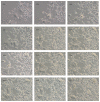Mesenchymal Stem/Stromal Cells in Stromal Evolution and Cancer Progression
- PMID: 26798356
- PMCID: PMC4699086
- DOI: 10.1155/2016/4824573
Mesenchymal Stem/Stromal Cells in Stromal Evolution and Cancer Progression
Abstract
The study of cancer biology has mainly focused on malignant epithelial cancer cells, although tumors also contain a stromal compartment, which is composed of stem cells, tumor-associated fibroblasts (TAFs), endothelial cells, immune cells, adipocytes, cytokines, and various types of macromolecules comprising the extracellular matrix (ECM). The tumor stroma develops gradually in response to the needs of epithelial cancer cells during malignant progression initiating from increased local vascular permeability and ending to remodeling of desmoplastic loosely vascularized stromal ECM. The constant bidirectional interaction of epithelial cancer cells with the surrounding microenvironment allows damaged stromal cell usage as a source of nutrients for cancer cells, maintains the stroma renewal thus resembling a wound that does not heal, and affects the characteristics of tumor mesenchymal stem/stromal cells (MSCs). Although MSCs have been shown to coordinate tumor cell growth, dormancy, migration, invasion, metastasis, and drug resistance, recently they have been successfully used in treatment of hematopoietic malignancies to enhance the effect of total body irradiation-hematopoietic stem cell transplantation therapy. Hence, targeting the stromal elements in combination with conventional chemotherapeutics and usage of MSCs to attenuate graft-versus-host disease may offer new strategies to overcome cancer treatment failure and relapse of the disease.
Figures


References
Publication types
LinkOut - more resources
Full Text Sources
Other Literature Sources

